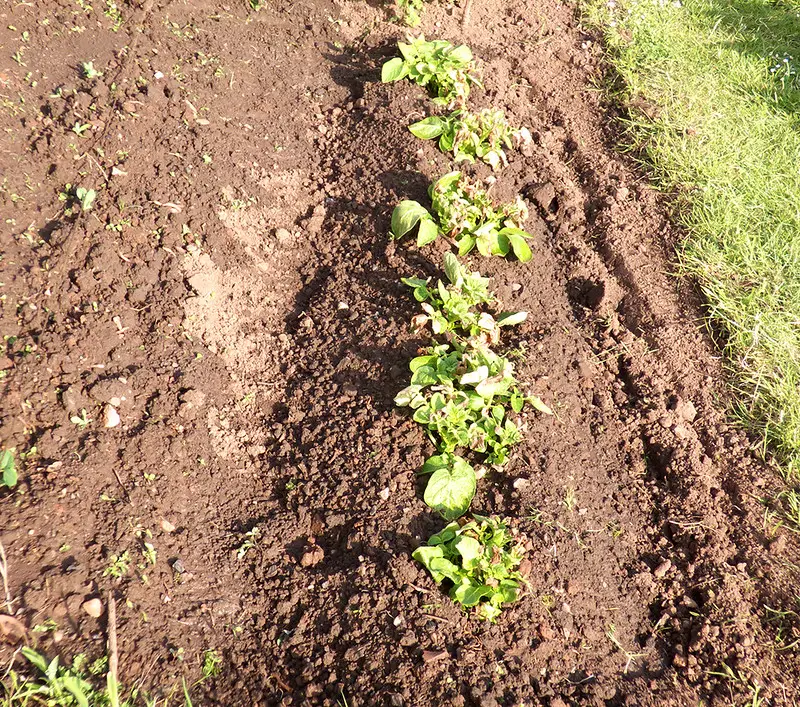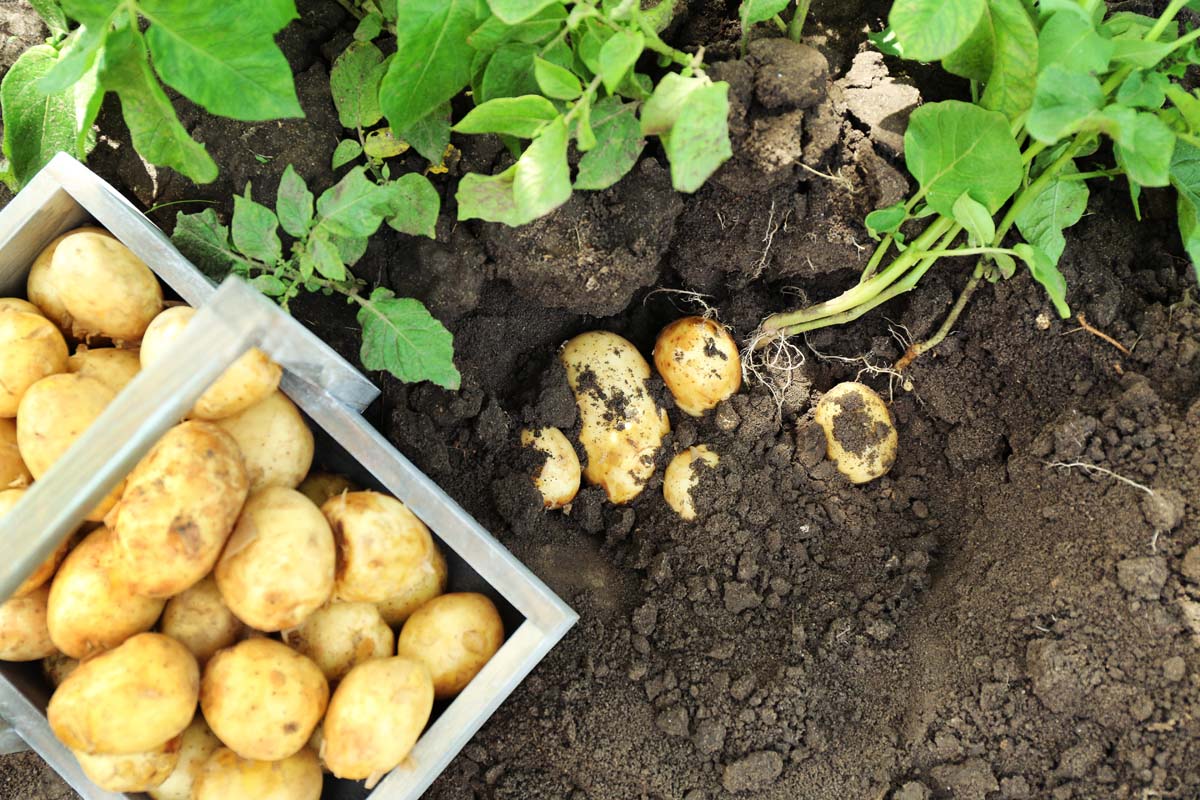Why Grow Potatoes in a Tub?
With the increasing popularity of container gardening, growing potatoes in a tub has become a viable option for many gardeners. This method offers a space-saving solution for urban dwellers and those with limited yard space, allowing them to still enjoy the benefits of homegrown produce. One of the most significant advantages of growing potatoes in a tub is its ease of maintenance. Potatoes require minimal care and can thrive in small spaces, making them an ideal crop for container gardening. Additionally, growing potatoes in a tub can result in high yields, with some varieties producing up to 20 pounds of tubers per plant. By following the right techniques and guidelines, anyone can successfully grow potatoes in a tub and enjoy a bountiful harvest of delicious, homegrown spuds.
Choosing the Right Tub and Soil
When it comes to growing potatoes in a tub, selecting the right container and soil is crucial for a successful harvest. The ideal tub for growing potatoes should be at least 12-15 inches deep and have drainage holes in the bottom to prevent waterlogged soil. Containers made of materials like wood, plastic, or ceramic are suitable options, as they provide good drainage and aeration. Avoid using metal containers, as they can conduct heat and damage the potatoes. In terms of soil, a well-draining, loose potting mix with a pH between 4.5 and 7.0 is ideal for potato growth. A mix specifically designed for containers or potatoes will provide the necessary nutrients and structure for healthy tuber development. Additionally, consider adding organic matter like compost or manure to the soil to improve its fertility and water-holding capacity. By choosing the right tub and soil, you’ll be well on your way to growing a bountiful crop of potatoes in a tub.
How to Plant and Care for Your Potato Tub
Once you have selected the right tub and soil, it’s time to plant your potatoes. Start by chitting your seed potatoes, which involves allowing them to sprout in a light, cool place for 2-4 weeks. This will give them a head start on the growing season. Next, fill your tub with about 4-6 inches of soil, and plant the chitted seed potatoes at a depth of about 2-3 inches. Space them about 6-8 inches apart, and cover them with a layer of soil. Water the soil gently but thoroughly, and make sure the tub is placed in a spot that receives at least 6 hours of direct sunlight per day. As the plants grow, add more soil or mulch around the base of the stems, leaving only a few inches of the leaves exposed. This will help to produce more tubers and prevent them from becoming green and toxic. In terms of care, make sure to water your potatoes regularly, but avoid overwatering, which can lead to rot and other diseases. You can also fertilize your potatoes with a balanced, water-soluble fertilizer once a month. Keep an eye out for pests like aphids and slugs, and take action quickly if you notice any problems. By following these simple steps, you’ll be well on your way to growing a successful crop of potatoes in a tub.
The Importance of Hilling and Mulching
Hilling and mulching are two crucial steps in growing potatoes in a tub. Hilling involves adding more soil or mulch around the base of the potato stems, leaving only a few inches of the leaves exposed. This process helps to produce more tubers and prevents them from becoming green and toxic. To hill your potatoes, simply add a layer of soil or mulch around the base of the stems, gently firming it in place as you go. Repeat this process every few weeks, or as the plants grow. Mulching, on the other hand, helps to retain moisture in the soil, suppress weeds, and regulate soil temperature. Use a thick layer of organic mulch like straw, grass clippings, or wood chips around the base of the plants, keeping it a few inches away from the stems. By hilling and mulching your potatoes, you’ll be able to maintain a consistent moisture level, reduce soil temperature fluctuations, and promote healthy tuber growth. This is especially important when growing potatoes in a tub, as the soil can dry out quickly. By following these simple steps, you’ll be well on your way to growing a successful crop of potatoes in a tub.
Common Challenges and Troubleshooting Tips
When growing potatoes in a tub, you may encounter some common challenges that can affect the health and productivity of your crop. One of the most common issues is pests, such as aphids, slugs, and wireworms, which can damage the leaves and tubers. To control pests, use organic pest control methods like neem oil, insecticidal soap, or copper tape. Another challenge is diseases like late blight, scab, and blackleg, which can be caused by fungal or bacterial infections. To prevent diseases, ensure good air circulation, water carefully, and remove any infected plants. Nutrient deficiencies can also occur, especially if the soil lacks essential nutrients like nitrogen, phosphorus, or potassium. To address nutrient deficiencies, use a balanced fertilizer specifically formulated for potatoes. Additionally, make sure the soil pH is between 4.5 and 7.0, as potatoes prefer slightly acidic to neutral soil. By being aware of these common challenges and taking proactive steps to prevent them, you can minimize the risk of problems and enjoy a successful harvest of potatoes in a tub.
Harvesting and Storing Your Homegrown Potatoes
After weeks of nurturing your potato tub, the moment of truth has finally arrived – it’s time to harvest your homegrown spuds To determine if your potatoes are ready to harvest, gently dig around the base of the stems with a fork, being careful not to damage the tubers. If the potatoes are ready, you’ll find them just beneath the soil surface. For “new” potatoes, harvest them when the plants are still flowering, usually around 10-12 weeks after planting. For “maincrop” potatoes, wait until the tops of the plants have died back, usually around 14-16 weeks after planting. When harvesting, carefully dig up the tubers, taking care not to bruise or damage them. Once harvested, store your potatoes in a cool, dark place with good ventilation. Keep them away from direct sunlight and moisture, as this can cause them to rot. You can store them in paper bags, breathable containers, or even a dedicated potato storage bin. By following these simple steps, you’ll be able to enjoy your freshly harvested potatoes for weeks to come, and experience the satisfaction of growing your own food in a tub.
Variety Selection: Choosing the Best Potatoes for Container Growing
When it comes to growing potatoes in a tub, selecting the right variety is crucial for a successful harvest. Compact and dwarf varieties are ideal for container growing, as they produce smaller tubers that mature quickly and don’t require a lot of space. Some popular varieties for container growing include ‘Tom Thumb’, ‘Patio’, and ‘Nicola’, which are known for their high yields, disease resistance, and delicious flavor. Other varieties, such as ‘Charlottes’ and ‘Jersey Royals’, are also well-suited for growing potatoes in a tub, offering a slightly larger tuber size and excellent flavor. When choosing a variety, consider factors such as days to maturity, tuber size, and disease resistance to ensure you’re getting the best potatoes for your container garden. By selecting the right variety, you’ll be well on your way to enjoying a bountiful harvest of delicious, homegrown potatoes from your tub.
Conclusion: Enjoying the Fruits of Your Labor
By following the simple steps and tips outlined in this guide, anyone can successfully grow potatoes in a tub. From selecting the right variety to harvesting and storing your homegrown spuds, the process is rewarding and fun. Growing potatoes in a tub offers a unique opportunity to enjoy fresh, delicious produce in even the smallest of spaces. With the increasing popularity of container gardening, it’s no wonder that growing potatoes in a tub is becoming a favorite among gardeners. By giving it a try, you’ll not only enjoy the fruits of your labor but also experience the sense of accomplishment that comes with growing your own food. So why not give it a go? Start growing potatoes in a tub today and discover the joy of harvesting your own homegrown spuds!








:max_bytes(150000):strip_icc()/growing--potatoes-in-the-home-garden-1403476-05-115b1ba558254b338945592400841b21.jpg)
